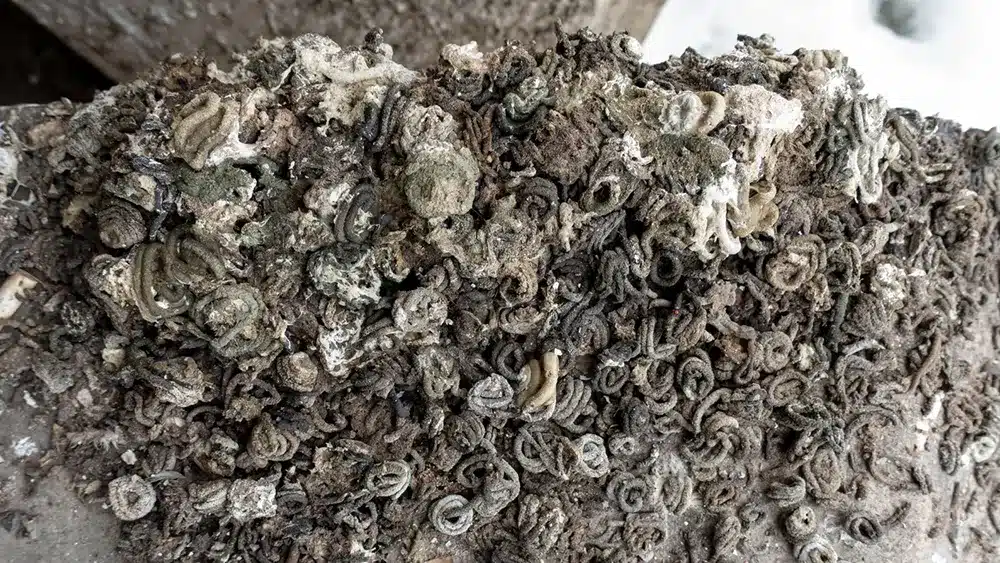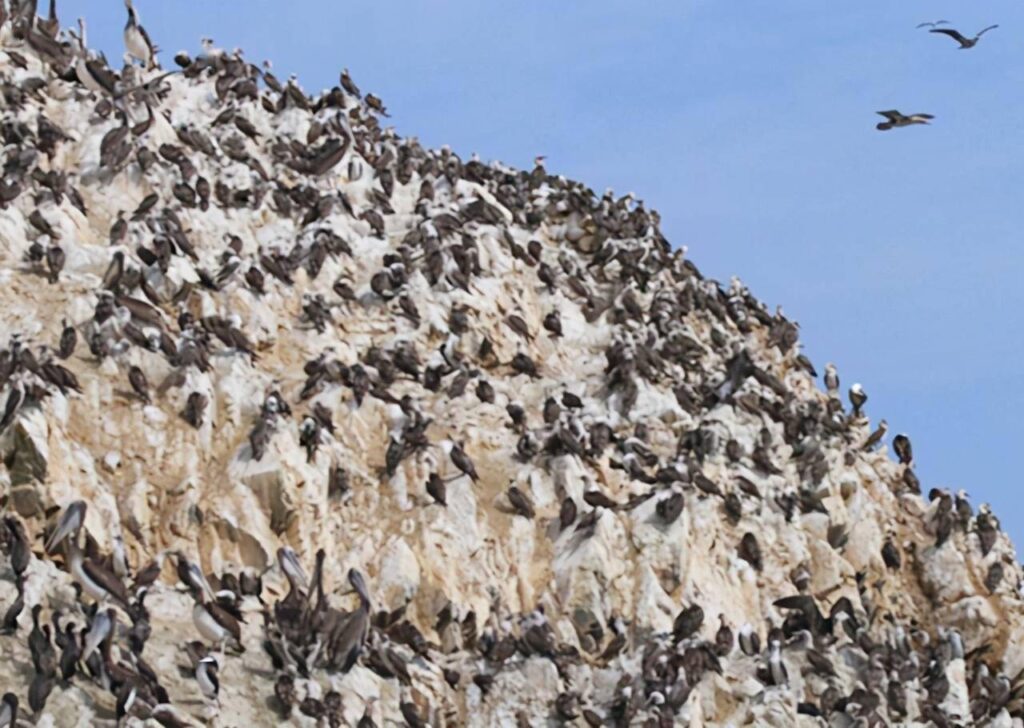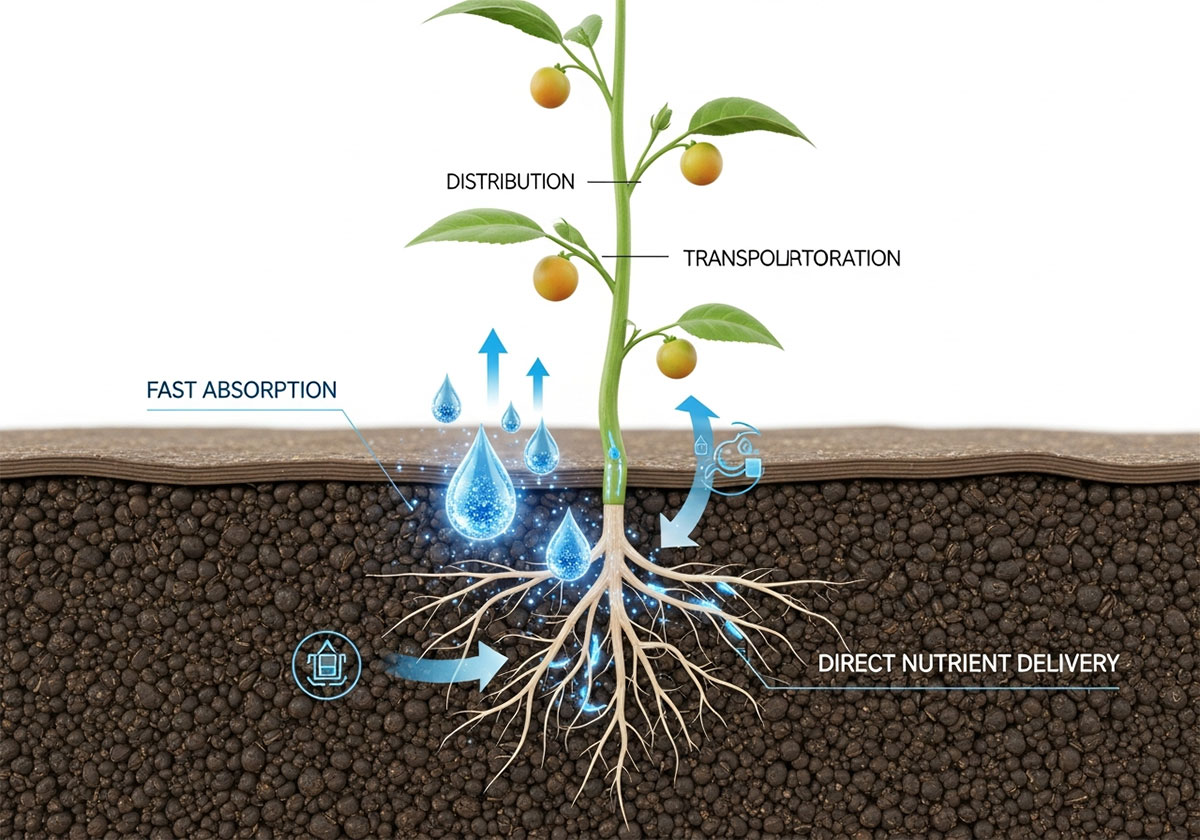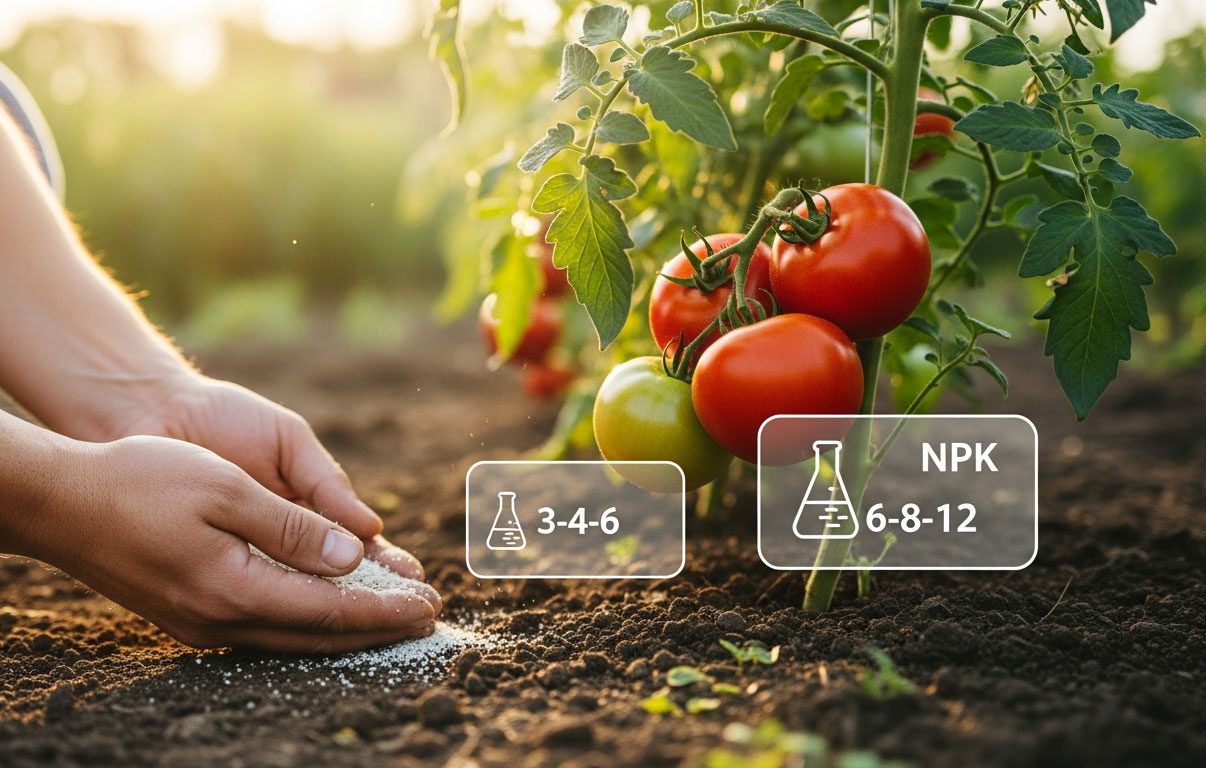table of contents
- ¿Qué es el fertilizante de guano de aves marinas?
- ¿Por qué el guano de aves marinas es tan especial?
- La historia del guano de aves marinas
- Guano de aves marinas vs. guano de murciélago: Diferencias clave
- Beneficios del guano de aves marinas para las plantas
- Utilice el guano de aves marinas de manera eficaz
- ¿Es seguro o sostenible el fertilizante de guano de aves marinas?
- Consejos para elegir fertilizante de guano de aves marinas
- Conclusión
Many farmers and gardeners consider using natural ways to boost plant and crop health. However, there are so many types of organic fertilizers, such as bone meal, blood meal, and compost. Among those organic fertilizers, seabird guano fertilizer is now becoming one of the most popular organic fertilizers in the world. It is famous for its 100% natural substance with full nutrients such as nitrogen, phosphate, potassium, and some other micronutrients. Today we will discuss the seabird guano with different aspects.

What is Seabird Guano Fertilizer?
Seabird guano, which comes from seabird droppings. Generally, it is found on coastal islands and rocky cliffs where these seabirds nest. Then, after centuries of exposure to sun and rain and microbial decomposition, this guano becomes rich in nutrients, making it a kind of perfect natural fertilizer.
Seabird guano has over 40% organic matter and is famous for its full nutrients with nitrogen, phosphate, and potassium, especially the nitrogen, because marine birds do not excrete urea; they only excrete uric acid. So the nitrogen is much higher than other animal excrement. And seabird guano also contains large amounts of micronutrients; all the nutrients are very essential for plant growth. Because it is both organic and renewable, now seabird guano has become the most popular choice for organic farmers and gardeners.

Why is Seabird Guano So Special?
The animal excrement has been used as natural organic fertilizer for crops over centuries. As we know, seabirds often seek the fish or other marine life. So this determines that their excrement is rich in nutrients for plants. Unlike synthetic fertilizers, which will impact the environment during production and also will cause pollution when fertilizing.
However, seabird guano comes from natural substances, does not impact the environment, and does not cause any pollution. And seabird guano releases nutrients slowly with full nutrients of phosphorus, potassium, carbon, and nitrogen. And, after decomposition, seabird guano will produce the organic matter. which will provide beneficial microorganisms for soil.
The History of Seabird Guano
According to archaeological evidence, the use of seabird guano can be traced back to 1,500 years ago, or even more than 5,000 years ago. The earliest known use of guano was by the Andean people, who collected it from small islands of Peru as a soil amendment.
Talking about Peru, we will think about the famous attractions—the Bird Islands, which consist of three small islands with a total area of about 2.5 square kilometers. The three bird islands are collectively called the Chincha Islands, which are also known as the “Kingdom of Birds”.
Due to prolonged geological activity, numerous natural caves have formed within the Chincha Islands. Simultaneously, the Peruvian coast, influenced by ocean currents, has developed extensive natural fishing grounds. These uniquely advantageous geographical conditions have made the Chincha Islands an ideal habitat for seabirds. Layers of bird droppings accumulated over time have coated the rock surface in a grayish-white hue, creating a stark contrast against the endless expanse of the azure sea.

Peru’s “Guano Era”
Peru’s economic rise began in the early 19th century when German scientist Alexander von Humboldt traveled to Peru for exploration. It was he who discovered the famous Peru Current and the vast fishing grounds it created.
More significantly, he also uncovered the valuable resource of guano on the Chincha Islands, where vast flocks of seabirds gathered. Through his reports, Europeans gradually recognized guano’s crucial importance for crop cultivation, thus launching Peru’s “guano economy.”
It must be noted that Peru’s guano economy was closely intertwined with Chinese laborers of that era. The dawn of Peru’s guano boom coincided with the 1940s—a period when China suffered relentless aggression and oppression from imperialist powers. Under their predatory rule, vast numbers of Chinese laborers were trafficked to Peru to work in guano mining operations.

Seabird Guano Mining
Seabird Guano vs. Bat Guano: Key Differences
Both seabird guano and bat guano are very popular because they are natural organic fertilizers. But there are still many differences between them; we cannot simply judge them as good or bad. Each type of guano can offer unique benefits, which can impact plant growth and development.
So, how to choose the right fertilizer (seabird-type or bat-type guano) is very important. If we want to know how to choose the guano, we should know the fertilizer ratios first. Seabird guano is rich in phosphorus, the general ratio is 0-12-0 or a similar ratio. High phosphorus can help to improve flowering, fruit set, and root development. However, bat guano has balanced NPK ratios, such as 7-3-1 and 10-3-1. From these NPK ratios, you can know the bat guano is rich in nitrogen, which can provide higher nitrogen for plants and improve vegetable growth and leaf development.
Seabird and bat guano also have differences in appearance. Because seabirds mainly take fishes for food, their guano has high mineral content, and the color tends to be grey or white. However, bats often take wild fruit or insects as food, so the guano typically presents as a darker or black color.
And seabird guano and bat guano have differences in release speed. Seabird guano often provides a slower release speed, making it ideal for long-term soil fertility management. However, bat guano is very different from the seabird type, it is a kind of quick-release fertilizer that can help to supply nitrogen urgently or solve the problem of plant nitrogen deficiency.
Seabird Guano vs. Other Organic Fertilizers
| Fertilizer Type | NPK Value | Key Nutrient | Best For | Sustainability |
|---|---|---|---|---|
| Seabird Guano | 0-11-0 / 12-12-2.5 | Phosphorus | Flowering & Root Growth | Ethically sourced from Peru |
| Bone Meal | 3-15-0 | Phosphorus | Bulbs & Tubers | Animal byproduct |
| Fish Fertilizer | 5-1-1 | Nitrogen | Leafy Growth | Marine byproduct |
As we can see, seabird guano is a more balanced and natural source of phosphorus than bone meal and fish fertilizer. If you want fast results for blooms and roots, seabird guano is often the better choice.
Benefits of Seabird Guano for Plants
Talking about the seabird guano benefits, we should realize that it is not good for plants and also can help to control our soil. Understanding these advantages can help us better use guano.
As we explained before, the marine bird guano is rich in phosphorus, which is the core value of seabird guano. Phosphorus is very important because it helps to transform solar energy into chemical energy, which can affect a plant’s flowering and fruits. If plants get seabird guano fertilizer, they usually will bloom more, have bigger flowers, and set more fruit, which makes it very important for gardeners and farmers.
Seabird guano also has a lot of trace minerals and micronutrients, which are often missing from regular fertilizers. Some of these are calcium, magnesium, sulfur, and other good things that can help plants stay healthy and fight against diseases.
Another big benefit of seabird guano is that it releases nutrients slowly, it often takes 3 to 4 months to release nutrients, which means it can provide steady nutrients for a long time for plants during their growth period, and we don’t need to worry our plants will get burned by fertilizer or lack of nutrients.
It is good for soil. Because seabird guano is decomposed by microorganisms, our soil will get a lot of beneficial microbes when we feed it with organic matter. Microbes can help improve soil quality, prevent soil compaction or desertification, and help soil become better structured, hold more water, and help plants get water and nutrients easily.
Seabird guano is also good for our environment because seabird guano is all-natural, it breaks down naturally, and it doesn’t contain any chemical elements, which are harmful to beneficial insects and will destroy soil structure or pollute our groundwater. So it’s not only good for the environment, but the plants that grow on the soil are also good for our health.
Use Seabird Guano Effectively
We talked about so many benefits of seabird guano, but we need to know how to use it correctly, including when to apply it and how much to use. This organic fertilizer can be used in many ways; each of these is suitable for a different type of garden or plant.
Soil Incorporation Method:
Before we plan to plant new plants or prepare a garden bed, we should mix seabird guano into the soil very well. We can spread 2-3 pounds of seabird guano fertilizer over 100 square feet of garden, then incorporate it into the top 6 to 8 inches of soil 2 to 3 weeks before planting. This can give microbes time to start breaking down the nutrients that can be absorbed by plants and also can help to prevent the sensitive seedlings from getting burned on their roots.
Top Dressing Method:
After our plants pass the seedling stage, we should consider the top dressing application. We can fertilize the fertilizer in a ring around the plant’s drip line. We can use about 1 to 2 tablespoons per plant for small ornamentals. For larger shrubs and small trees, we can use up to 1/4 cup. To avoid burning the roots, our fertilizer should not touch the stems or trunks of plants directly. And, to start the release of nutrients, we should work the fertilizer lightly into the top inch of soil and water it well.
Making & Using Liquid Fertilizer
When we make liquid fertilizer, we need to mix 1 to 2 tablespoons of guano per gallon of water. Then, let it steep for 24 to 48 hours, and don’t forget to stir it occasionally. It can be used as fertilizer in soil or as a foliar spray for a quick nutrient boost.
Application Timing Considerations:
When to fertilize the plants with seabird guano fertilizer is very important, it depends on the plant growth period and the local climate conditions. We should apply the fertilizer 2 to 3 weeks before the expected bloom time so that we can ensure the phosphorus supply during flower formation. For vegetable garden application, we should use it when we’re doing transplanting.
Dosage Guidelines for Different Plants
For container plants, because they have less soil and frequent water, this will cause the nutrient loss. So they need to be watered more often but with less fertilizer. We can use 1 teaspoon per 6-inch pot every month during the growing season.
For fruit trees, you’d better apply 1 to 2 cups of fertilizer evenly under the canopy area in early spring and again in early summer. During the growing season, we should apply fertilizer 2 to 3 times per plant; it is working well for annual flowers and vegetables.
Is Seabird Guano Fertilizer Safe or Sustainable?
This question is not that complicated. Frankly speaking, seabird guano is a natural resource from seabird, if you use it correctly, it can be very safe and natural. Let’s talk about how we can realize it.
- Choose a reliable and certified supplier who sells organic seabird guano.
- Choose products that have been certified organic, such as those that have passed ECOCERT NOP, EU, JAS, or CERES.
- Don’t overuse the seabird guano, it may hurt the plants.
So we can see that seabird guano is safe and good for our environment when it is used in the correct way.
Tips for Choosing Seabird Guano Fertilizer
As we know, there are a lot of seabird guano fertilizers on market, all these products have different qualities. It’s difficult for us to determine the quality. So please follow us:
- Check the Label: We can look for NI or MORI organic certification on the label.
- Form Options: Seabird guano has different forms, such as powder, granular, or liquid. We take the seabird guano in the form of granules.
- Trusted Supplier: Buy fertilizer from reliable brands to make sure the product is pure and doesn’t contain low-quality products.
If you need to buy the high-quality seabird guano fertilizer with organic certification, you can choose Rutom Searbid Guano Fertilizer, which has passed ECOCERT and CERES.
Conclusion
Seabird guano fertilizer is one of the best natural ways to help plants grow. It has a lot of nitrogen and phosphorus, which helps roots grow, flowers bloom, and improves the soil’s health. In our guide, we’ve discussed the remarkable performance of seabird guano, from its astonishing phosphorus content to its slow-release properties, which provide our plants sustained nutrition over extended periods.
Facts have proved seabird guano can achieve the results of professional-grade synthetic fertilizer but also support environmental sustainability and soil health.
Related Posts






